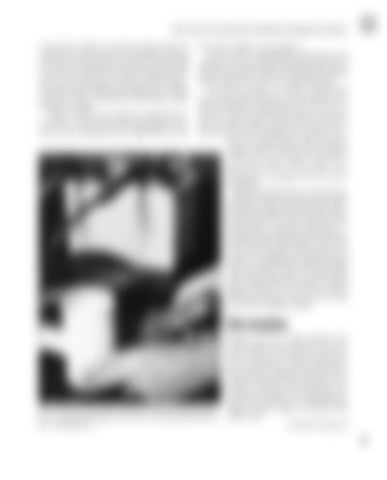Wire and Circuit Protection Standards and Repair Procedures internal fuse. Make sure that the jumper leads are connected to the DC positive and negative terminals on the piece of equipment in question. Clip the leads in series with the load and take the amperage reading once the equipment is running. With an inductive clamp meter, simply get the equipment running, clamp onto either of the leads of the jumper cables, and take a reading. Figure 4-2 shows the hookup for making this basic test. For a look at the typical amperage for common items of equipment you might find on your
boat, refer to figure 3-15 on page 37. Once you have established the amperage for the equipment you’re testing, selecting the correct size of wire to use is simply a matter of working the numbers found in figures 4-3 and 4-4 on pages 44 and 45. Let’s try out figure 4-3. You’ve decided that you’re dealing with a critical circuit and will use the 3 percent maximum voltage drop value. Yours is a 12volt boat, and you know that the pump in question draws 5 amps and that 20 feet of wire separates it from the panel board supplying the pump. A twoway run would mean a total conductor length of 40 feet. Find the 40-foot column on the chart and correlate it with the 5amp row in the 12-volt section. You should find a 10-gauge wire size recommendation. Keep in mind that these two charts are designed for sizing wires based on the ABYC acceptable voltage drops described earlier. Don’t confuse the 3 percent and 10 percent specifications. And most important, remember that the length of the wire is the total of the positive and negative sides of the circuit. For example, if a component is 12 feet from your distribution panel, the length of the run will be 24 feet. The column that most closely matches that on either of these tables is labeled 25 feet. When a number falls between any two values, always round up to the next highest number.
Wire Insulation
Fig. 4-2. Battery jumper cables being used to determine amperage draw for a new electrical installation. In this case, I’m checking the actual draw for a new bilge blower.
Quality wire has a rather lengthy story written right on the insulation. The writing on the wire can help you decide the wire’s suitability for certain applications: the maximum voltage for the wire and insulation; resistance of the insulation to oil, moisture, and fuels; and temperature ratings of the insulation; are all explained in cryptic notation. Again, our friends at the ABYC come (continued on page 46) 43


































